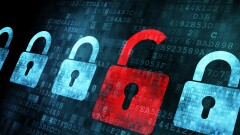Good security is just not good enough anymore. While it’s impossible to have truly impenetrable security, your (and your clients’) security has to be the best you can possibly implement. That’s never been truer than in today’s work-from-anywhere and hybrid office environments. And the best path to improving your practice’s security is to be aware of where the vulnerabilities lie, and how to address them in a way that’s efficient and effective.
To help in this endeavor, we talked to some of the most security-conscious firms and consultants for their guidance on where to look for vulnerabilities, and how to lock them down when you find them. Below are 14 of their best tips, but remember that when it comes to security, these tips just scratch the surface. In addition to the checklist mentioned in No. 13, and the other suggestions provided here, make sure your firm has a detailed disaster plan, not only for breaches of security, but for other disasters as well. When it comes to malware, ransomware, phishing, and other attacks on your security, it’s very likely that it won’t be if those attacks happen, but when. And when they do, you and your clients need to have a plan on how to handle them.
















